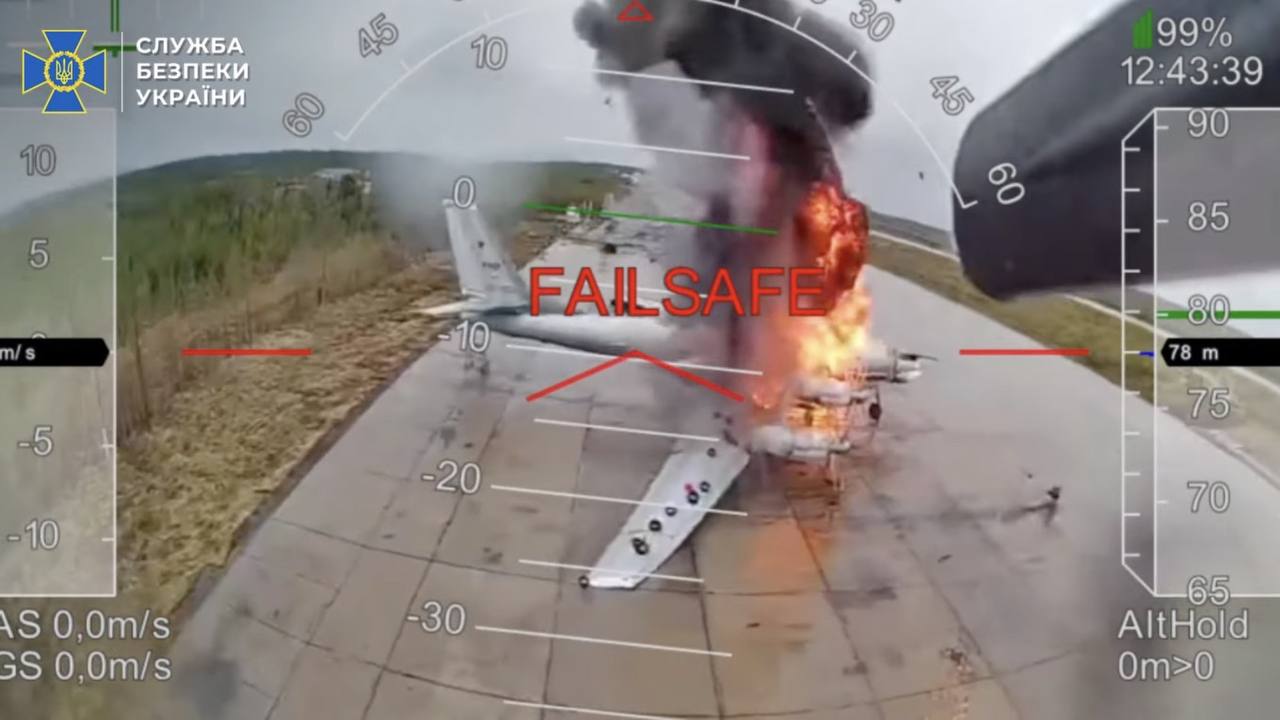Operation Spiderweb is the future of war
National leaders everywhere must be shuddering at the implications.
As Russia's war on Ukraine grinds on into its fourth year, the contours of the conflict have become clear. At a staggering cost of lives and materiel, Russia is slowly creeping deeper into Ukrainian territory. On the other hand, Ukraine is the underdog that keeps finding vulnerable spots to strike at its larger enemy. They're bleeding Russia's arsenal of war, weakening their capacity to fight and slowing their momentum to a crawl.
In June 2025, Ukraine launched its cleverest and most audacious counterattack yet, dubbed Operation Spiderweb. Together with the sinking of the Moskva, it was a daring strike that will go down in the annals of military history.
A simple but ingenious plan
The plan was simple but ingenious. Ukraine constructed fake movable wooden cabins of a kind that are routinely transported on trucks. These faux cabins had hidden compartments stocked with FPV suicide drones. They then hired unsuspecting truckers to drive them into Russian territory and park near military air bases.
Once the containers were in position, Ukrainian remote operators sent a signal that triggered the secret compartments to open automatically. The drones flew out in a swarm, striking the Russian bases and dive-bombing warplanes on the ground, where they were vulnerable.
While estimates vary, it seems that around 40 Russian military aircraft were struck by drones, of which between 10 and 20 were completely destroyed. Since Russia is estimated to have around 120 bombers in total, this is a major chunk of its air force.
The confirmed kills include Tu-160 and Tu-95 bombers (similar to the American B-52) that Russia no longer produces and can't replace. Russia was regularly deploying these planes to launch cruise missiles at Ukrainian cities, using them as terror weapons to kill civilians and inflict misery. Each one that's damaged or destroyed represents a breath of relief for Ukraine and a significant loss of Russian combat capability.
In addition, at least two valuable A-50 early-warning aircraft were also damaged. Without these planes, Russia will have less control over the airspace, opening up the possibility of more Ukrainian victories in air-to-air dogfights. Indeed, just a few days later, a Ukrainian F-16 apparently shot down a Russian Su-35 fighter jet.
Not only did this attack achieve its strategic objectives, it was a spectacular return on investment. For the price of a few hundred cheap drones, Ukraine destroyed billions of dollars' worth of irreplaceable Russian military assets. This strategy massively extended Ukraine's reach, hitting bases deep inside Russian territory—including the Belaya airbase in eastern Siberia, thousands of miles from the border. It must have been a tremendous shock for Kremlin generals who believed themselves untouchable on their own territory.
The shudder heard round the world
As I've noted before, cheap drones are a force multiplier. They've allowed Ukraine to fight on equal terms—and even win some dramatic victories—against a Russian military that, on paper, commands more soldiers, more tanks, more planes and more artillery than Ukraine could ever muster. In that respect, we should cheer it as a blow against Putin's mindset of genocidal conquest.
Nevertheless, when this story broke, national leaders and military officials all over the world must have shuddered with fear. There's no reason this strategy wouldn't work in other contexts.
A hostile nation could "seed" an adversary with drone-packed cargo containers, smuggling them across the border and concealing them near valuable military assets—or important infrastructure like railroads, pipelines or power plants. These robotic sleeper agents could lie dormant for weeks, months, potentially years. Then, at a signal, they'd all deploy simultaneously, launching a massive wave of surprise attacks with the goal of crippling the rival's military before they know what hit them.
A well-equipped terrorist group could use the same blueprint to strike at soft civilian targets. It would eliminate the necessity of finding religious fanatics willing to be suicide bombers. Just a few such drone bombings could sow mass panic among the population. It's also readily conceivable that suicide drone attacks could be used to assassinate public figures.
At the moment, there are few good defenses against this threat. It's logistically impossible for a nation to scan every cargo container that crosses its borders. Even if they could, drones are common in technologically developed societies and used for many legitimate purposes. There's no way to tell the harmless ones apart from those with malicious intent.
The next arms race
War always leads to rapid technological development, and this one is no exception. Lookout towers and snipers on the rooftops are obsolete. The next arms race will be drone versus drone.
We can picture a future where military bases, and civilian facilities, will be protected by clouds of drones that patrol the airspace 24/7. Since no human controller could respond to an attack with the speed required, and since jamming is an ever-present threat, these defensive drones will have to be autonomous. They'll use AI technology to recognize their own kind. Like an immune system guarding the body from invaders, they'll permit known "friendlies" to pass, while reacting instantly to neutralize or destroy any unfamiliar drones or anything that's somewhere it's not supposed to be.
The corollary is that the wars of the future won't be fought by humans. We're too earthbound, too slow, too distractible, too hampered by bodily needs like sleep. The soldiers of the future will be robots, and as they go to war with each other, human beings will increasingly be locked out of the loop. The victors of these conflicts won't be the strongest or the bravest, but those who have the most advanced technology.

